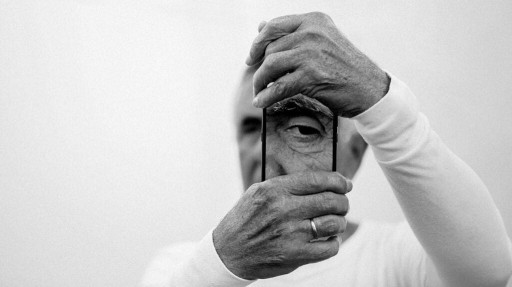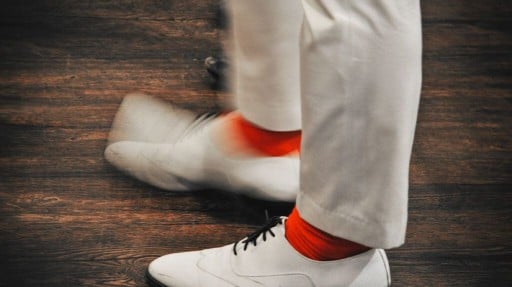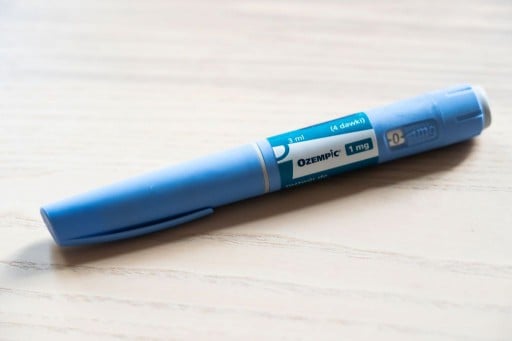- During the winter months, cold temperatures can cause the skin to lose moisture.
- This lack of moisture is behind dry skin, nosebleeds, certain rashes, and other wintertime skin issues.
- Experts recommend people take preventative measures like moisturizing and protecting the skin from the elements, as well as getting in touch with a dermatologist if issues don’t go away.
Winter weather may prompt serious skin issues.
Whether it’s skating, sledding, or simply walking to work, there are plenty of opportunities to get outside during the colder months. However, exposure to cold air can leave some people with bothersome or even dangerous skin issues.
When the temperature and humidity drop, skin can become dry, cracked, and prone to infection. In severe cases, frostbite can occur.
Here’s what experts had to say about the most common winter skin ailments and tips for keeping skin hydrated and healthy year-round.

Getty Images / miniseries
Moisturizing Dry, Winter Skin
“You’ll see it in the morning—your skin is more dry and flaky. And you’ll notice symptoms-wise, it’s perhaps more itchy,” Quitadamo told Health. “Lips may be dry, fissured, and painful.”
Cold temperatures can make the skin lose water or moisture, drying it out, Angad Chadha, MD, an assistant professor of dermatology at the University of Chicago School of Medicine, told Health.
The most obvious and easiest solution to fight dry skin is to stick with a good moisturizing regimen.
Chadha explained that there are three levels of moisturizer: lotions, creams, and ointments (like Vaseline). Each step increases in intensity.
In general, people should moisturize once they get out of the shower, Chadha said. A second application—before bed—may be necessary if dry skin persists.
While most people opt for either creams or lotions, ointments are good for people with extremely dry skin, he said.
In addition to prioritizing a moisturizing routine, it’s also important to mitigate anything that might be aggravating your dry skin, like licking your lips or using fragranced lotions or other products, Quitadamo and Chadha explained.
Avoiding Nosebleeds
While several things can cause a nosebleed, dry, winter air is oftentimes the culprit.
“[During the winter], we’re breathing this very cool but dry air,” Quitadamo explained. “And that dry air is drying out what should be a nice, moist membrane inside the nose.”
Once someone’s nose is dry, he explained that their blood vessels are exposed and more likely to bleed.
If someone’s getting more nosebleeds in the wintertime, it’s again important to hydrate the skin, Jason Rizzo, MD, PhD, a dermatologist in private practice in Southwest Florida, and former clinical adjunct professor at the University at Buffalo, told Health.
5 Must-Know Winter Skincare Tips, According to Dermatologists
Wintertime Rashes to Be Aware Of
There are a few different types of rashes people may be more prone to in the winter months.
Dermatitis
Though not exclusive to the winter months, atopic dermatitis—the most common type of eczema—is a skin condition that dermatologists frequently see when temperatures get cold.
“People who have a history of eczema-prone skin often flare in the winter,” Chadha said.
Another type of dermatitis that causes red, itchy, and scaly skin—dry winter itch/eczema—is also common in the winter months, Quitadamo added.
If someone’s suffering from eczema or other types of itchy, inflamed rashes in the winter, they should at first try to manage it like they would dry skin, with a moisturizer, Chadha explained.
However, people should “[seek] out dermatologic care sooner rather than later, especially because sometimes when the cycle of eczema triggers, it’s really hard to get under control,” he said.
Angular Cheilitis
People can get angular cheilitis at any point during the year, but it’s oftentimes “more severe, robust in the winter,” said Rizzo.
This condition is inflamed, cracking skin in the corners of the mouth that becomes infected.
With angular cheilitis, moisture accumulates on the skin—or in this case, in the corner of the mouth—and then the skin starts to break down, Chadha explained.
From there, people can develop a fungal infection.
If the skin is cracked or broken down in some way, said Chadha, Vaseline or similar products can help repair that. But if the skin is infected, people may want to use antifungal cream in the corners of the mouth.
These products are “usually available as an athlete’s foot or a jock itch cream,” he said. “Even though it’s advertised as that, at the end of the day, it’s just an antifungal product that you can use anywhere on the body.”
Cold Urticaria
Winter temperatures may also bring on cold urticaria, which is hives brought about by cold temperatures, Chadha explained.
This is technically considered an allergic condition and causes a red, itchy rash on the skin.
“In conditions like cold urticaria, actual temperature changes can trigger an inflammatory response from the skin,” said Rizzo. “But that’s very rare.”
It’s unlikely that the rashes people see during the winter are actually cold urticaria, Chadha said. Quitadamo added that this condition is seen more so in the spring or early summer when people are jumping into cold bodies of water.
However, if someone is breaking out in hives when they’re in cold air or water, oral antihistamine products can help the rash subside, Chadha explained.
The 10 Best Eczema Creams of 2023, Tested and Reviewed
Sunburn and Windburn Can Take a Toll As Well
Other elements—not just cold temperatures—can take a toll on people’s skin during the winter months, too.
Though they’re separate conditions, windburn often goes hand in hand with sunburn—the wind can leave the skin more prone to UV damage.
“There’s a fallacy that you can’t get sunburned or sun damage in the winter because the sun’s not out,” said Rizzo. “And that’s actually incorrect.”
The snow can reflect sunlight, he explained, so he often sees sunburns in snowskiers.
To avoid windburn, “cover up the areas that you tend to get windburn—balaclavas are not in fashion anymore, but if you can swing one, that would be great,” said Chadha.
And using daily sunscreen is always a good idea, Rizzo said, including during the winter months.
Protecting Your Body From Frostbite
When exposed to extremely cold temperatures, people can experience frostnip, a very mild form of frostbite. When this happens, the skin turns cold and white, and people may experience pain or pins and needles.
Frostnip can turn into frostbite, which can cause red, blistering skin, or in the most serious cases, blue or blotchy skin that can turn into blisters and black scabs.
“You’ll see it maybe on fingertips and toes, ears, and the tip of the nose,” said Quitadamo. “The body closes down the peripheral circulation and brings the warmth to the center of the body. So those distant areas don’t get as much blood as they should.”
Essentially, the cells die as a result, Chadha said.
Unlike many other skin ailments, frostbite can only happen in the wintertime, as the cold is directly damaging the skin cells.
Severe frostbite can sometimes lead to permanent sensitivity to cold or numbness, or in some cases, may even require amputation.
If someone is concerned that they may be experiencing frostnip or frostbite, the first thing to do is to warm up the skin, Chadha said. If symptoms don’t go away promptly, people should seek immediate medical attention.
“You want to keep your body and your skin insulated appropriately to protect from extreme temperatures,” said Rizzo. “Appropriate winter clothing is also key.”
The 5 Most Common Wintertime Injuries, and How to Avoid Them
Dealing With Skin Conditions This Winter
Wintertime skin issues can happen to anyone, however, people who work or do activities outside, and unhoused people are at a higher risk.
Genetics may also play a role—people who are prone to allergies, asthma, hay fever, and hives are also the same people who are often more prone to dry skin, Quitadamo said.
And, age can make someone more prone to skin conditions—older people and young children are at a higher risk, Rizzo and Chadha said.
In most cases, protecting the skin with warm clothing, using good moisturizers, and using humidifiers—especially while you sleep—are surefire strategies to avoid the worst winter skin conditions.
However, if over-the-counter techniques aren’t working, pain is getting worse, or there are signs of infection, people should seek help from a dermatologist.








